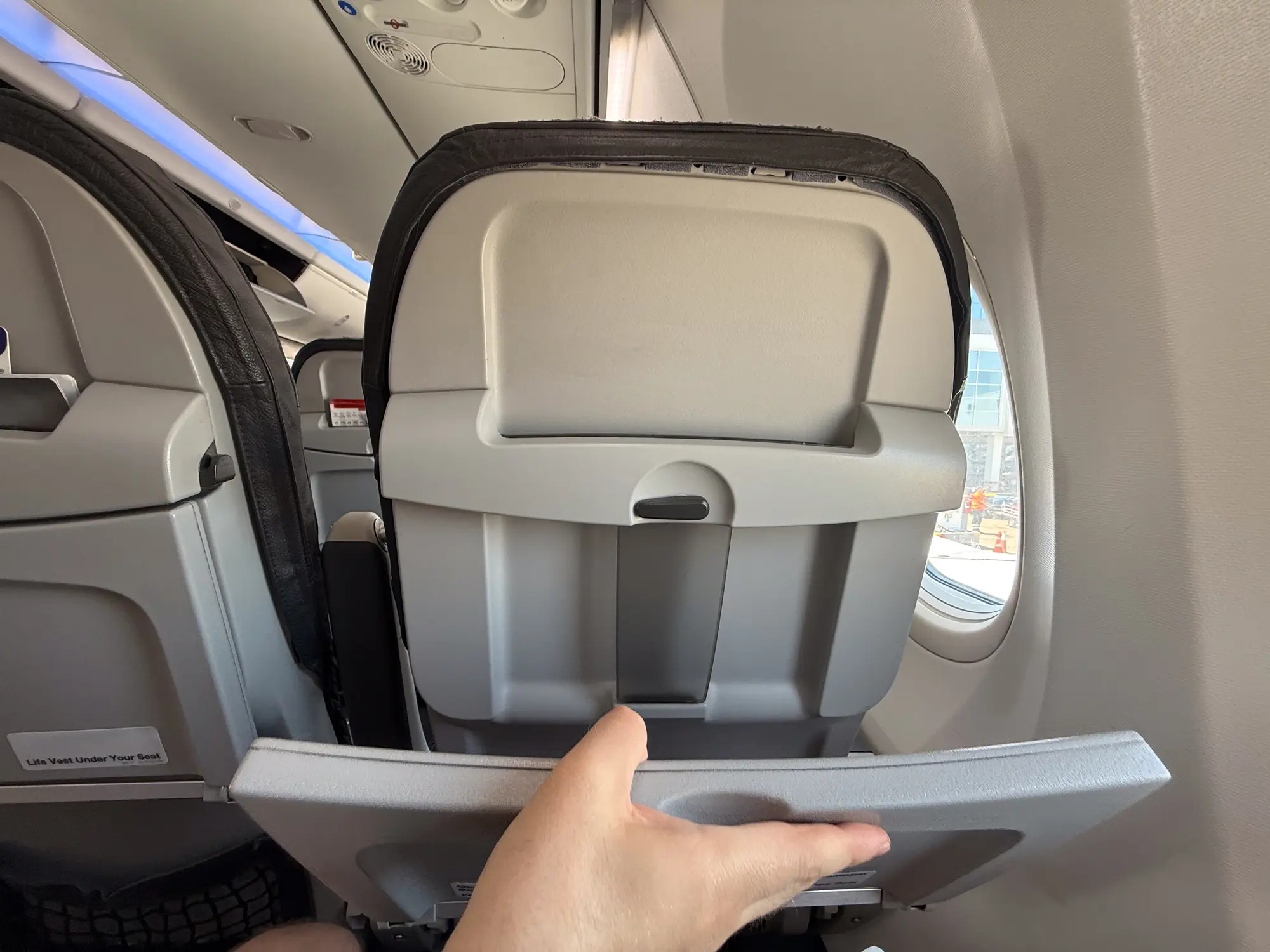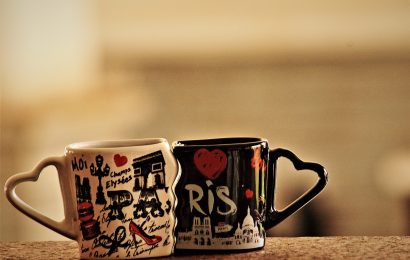Suppose you’ve been anywhere near social media lately, especially the food-travel corner of TikTok or Instagram Reels. In that case, you’ve probably already seen that video: the passenger who casually made fresh pasta – gnocchi, to be exact – while cruising at 30,000 feet.
Flour. Water. A mixing bowl. A gnocchi board.
On a commercial flight.
In the economy class.
The internet, predictably, exploded.
Some viewers applauded the creativity. Others admired the commitment to carbs. And many, many more were horrified – imagining tiny clouds of flour floating through the cabin, wondering whether they’d accidentally inhaled ravioli in the making.
But beyond the memes and the heated comment threads, the story actually raises some very real questions about in-flight etiquette, food allergies, hygiene, and – perhaps surprisingly – clever marketing.
When I wrote, a few days ago, about the two passengers who ran onto the tarmac to catch a plane (its engines were working already) I said I did not believe I could write about that. Well, I didn’t think I would write about people making pasta on airplanes either. But here we are.
Let’s dive into what really happened, why it went viral, what people are missing, and what this tells us about modern travel culture. Because yes, I am looking at this from all perspectives: I am a marketing and public relations specialist, but I am also a passenger.
ID 201959179 | Airplane Tray Table ©Sirawit Hengthabthim | Dreamstime.com
What Actually Happened: The Real Story Behind the Viral Pasta Flight
The viral video was posted by Katie Brooks, a content creator who runs Buona Pasta Club – a small pasta-making brand that offers classes, tutorials, and what she calls her “Pasta in the Wild” series.
In that series, she creates pasta in unusual locations for fun – think parks, beaches, scenic overlooks… and now airplanes.
Her mid-flight pasta moment unfolded like this:
- She was flying from Philadelphia to San Diego
- She pulled out a small bowl, flour, water, and a gnocchi board
- She mixed and kneaded dough
- She rolled and cut it
- She shaped gnocchi by hand
That’s it.
She did not cook the pasta.
No boiling water. No hot plate. No makeshift in-flight kitchen.
But “POV: You hate airplane food so you make it yourself,” – it is written on the video.
But it is not really a final dish, right?
Again.
She made a few pasta.
That is all.
No boiling.
No final dish.
So NOT really an alternative to airplane food.
As a side note, as a PR, I can always say that instead of such a promotion, you can start to create partnerships and help airlines provide better food options – if you, as a chef, discover issues!
According to People Magazine, she meant the post as a playful joke – nothing more than a moment of creativity and part of her ongoing pasta-content series.
Yet, the internet assumed otherwise.
Cue chaos.
Was This a Promotion Campaign?
Short answer: Yes – in a way.
Not a corporate sponsorship or airline brand partnership, but definitely a content-marketing moment for her pasta brand.
Katie Brooks has:
A pasta-making business
A “Pasta in the Wild” themed series
A persona as a quirky, adventurous, pasta-everywhere personality
This video fits perfectly into that branding strategy.
It wasn’t a random passenger kneading dough because the in-flight meal wasn’t up to par.
It was a creator intentionally crafting a viral, memorable, on-brand visual moment.
And honestly?
Mission accomplished.
But that doesn’t mean the internet loved every part of it. Or that all this promo and awareness is good.
YES, there is such a thing as bad publicity – despite what you might have heard before!
Why Did the Passenger Make Fresh Pasta on a Plane?
The Controversy: Why the Internet Was So Split
Reactions to the video ranged from “This is hilarious and wholesome” to “I would have called the flight attendant instantly.”
Here are the main themes.
1. The Allergen Issue (The Most Serious Concern)
This is the big red flag – and the one most people feel strongly about.
Wheat is one of the most common airborne-sensitive allergens.
Even tiny flour particles drifting through a confined cabin could trigger asthma-like reactions or symptoms in sensitive passengers.
Airplane cabins are:
- Pressurized
- Dry
- Highly circulated environments
- Meaning airborne particles travel fast and far.
You simply cannot control flour dust in a cabin – even when being careful.
This is why many travelers argued that, funny or not, this crossed a line.
Here is just one reaction to her video (You can see what everyone says on the official video, already linked):
“As a mom of a child with anaphylactic allergy to wheat, I’m shocked. Please don’t do this in an airplane where people are contained in a small vessel, air is circulated and the nearest hospital is hours away.”
This video also brought renewed attention to the wheat allergy risk on airplanes, something that isn’t discussed nearly enough despite how common airborne-sensitive reactions can be.
2. Hygiene and Comfort
Let’s be honest: airplane tray tables are not the cleanest surfaces on Earth.
Studies repeatedly show they carry more germs than the lavatory flush button – here’s one example: CBC tested surfaces and found tray tables had the highest bacterial levels
Now imagine:
- Raw dough
- Unwrapped food
- Sticky hands
- Flour dust
- Kneading
- Folding
- Cutting
And yes, she may have applied hand sanitizer. And she has a special bowl + small item to create the pasta, so she does not touch the airplane tray with the dough.
Still, you touched many surfaces until you sat in an airplane.
Would you really eat pasta done by someone (even you) who did not wash their hands before cooking?
Even people without allergies were uncomfortable just watching it.
3. Odor and Mess
ID 400972918 | Airplane Tray Table ©Tatiana Chekryzhova | Dreamstime.com
Even though this wasn’t a cooked dish, airplane etiquette experts usually advise:
- No messy foods
- No smelly foods
- No foods requiring prep
- No foods that risk spilling
Flour checks at least two of those boxes.
When it spills, it explodes.
Flour is so light and powdery that even a tiny shake or breeze sends it drifting everywhere, turning a small mess into a full-airplane snowstorm of dust.
And on a plane?
There’s no “just vacuum it.”
There’s no “just wipe it.”
There’s only: the next passenger finding flour on their tray table.
4. Security + Rules Confusion
The comment section was full of people asking:
“How did she get this stuff through TSA when I can’t bring a water bottle?”
Rightfully so, the logic is confusing.
TSA allows:
- Dry ingredients
- Food
- Kitchen tools that aren’t knives
So technically, yes – pasta-making supplies are allowed.
But socially?
That’s another story.
And honestly, this whole situation had many travelers Googling one thing: is it allowed to prepare food on a plane? The answer is technically yes when it comes to TSA rules – but socially, etiquette-wise, and allergen-wise, it’s a very different story.
Many people were surprised to learn that yes, passengers are allowed to bring flour on flights, as long as it’s screened properly – even though opening it mid-flight is a completely different (and far more controversial) issue.
The Big Question: What’s the Point… If You Can’t Even Cook the Pasta?
This is the question everyone keeps asking.
You can’t boil water on a flight.
You can’t ask the flight attendant to “just pop these in the galley for five minutes.”
You can’t fire up a portable stove.
There’s no pot.
There’s no burner.
There’s no space.
There’s no time.
And indeed:
She did not and could not cook the pasta.
So… why bother?
Answer: Content. Branding. Virality.
The pasta wasn’t meant to be eaten – it was meant to be filmed.
And as a content creator, she succeeded brilliantly.
But for regular passengers?
There’s simply no practical reason to do this.
Which is why the backlash was as strong as the applause.
And for anyone wondering, can you cook on a plane TSA rules-wise? Absolutely not – TSA may allow ingredients, but cooking or heating food onboard is strictly prohibited for obvious safety reasons.
Airline Etiquette Experts Weigh In (And You Might Be Surprised)
Unsurprisingly, many etiquette and aviation experts sided with the critics.
Flying etiquette specialists generally highlight:
- The importance of respecting shared space
- The need to avoid allergens
- Keeping food simple and contained
- Being mindful of noise, mess, and smells
Making pasta – while considered cute and clever by some – doesn’t really meet those guidelines.
This whole situation is a perfect example of why airplane etiquette for travelers increasingly focuses on respecting shared space and minimizing anything that could affect fellow passengers.
Okay… But Should Airlines Ban This?
Good question!
Technically:
- She followed TSA rules
- She didn’t use prohibited items
- She didn’t violate any standard airline safety protocol
So banning it outright isn’t likely.
But it does raise the issue of:
- Clearer guidelines for food prep on flights
- Stronger allergen protection policies
- Encouraging passengers to avoid messy foods
These are ongoing conversations in airline policy circles anyway.
What This Says About Modern Travel Culture
If you’re wondering why the pasta on a plane video went viral, the answer sits right at the intersection of novelty, shock value, and the very online culture we all participate in.
This incident is more than a quirky viral video.
It says something real about how we travel today.
1. Travelers are more creative than ever.
Sometimes too creative.
2. Content creation is now part of the travel experience.
Airplanes are no longer “dead zones” – they’re studios.
3. People crave novelty.
We’ve seen every angle of wing photos and skyline takeoffs.
We haven’t seen gnocchi shaping at 30,000 feet.
4. Travel etiquette keeps evolving.
And the rules are often unspoken – leading to moments like this.
So… Should You Try Making Pasta on a Plane?
Making fresh pasta at cruising altitude easily qualifies as one of those things you should never do on a plane with food, no matter how harmless or creative it might seem in the moment.
In one word:
NO!
In five words:
Please, for everyone’s sake, don’t.
Here’s why:
- Allergy risks
- Mess and cleanliness
- Discomfort for nearby passengers
- Lack of space
- No way to actually cook it
- Social awkwardness
- Possible confrontation with crew or passengers
There are plenty of ways to enjoy a long flight.
Kneading dough in the middle seat?
Probably shouldn’t be one of them.
And like many unusual travel moments, this turned into a full-fledged viral in-flight food incident – one that left people equal parts amused, confused, and concerned.
We’re All Just Doing Our Best Up There
One of the reasons this video resonated so strongly is that travel brings out both the best and the strangest parts of us.
We nap in odd positions.
We eat tiny meals with tiny forks.
We watch movies we’d never watch on the ground.
We try to make the experience personal – sometimes too personal.
Was the pasta moment ill-advised?
Most likely, yes.
Was it malicious?
Not at all.
Was it entertaining?
Some considered it to be.
Shared spaces require shared responsibility.
Especially 30,000 feet in the air.
Make your pasta at home.
Or in a cabin in the woods.
Or at your next Airbnb.
Just… maybe not between rows 14 and 15.
My 2 cents: As you probably realised from what I wrote above, I do not think this was a good idea – for sooo many reasons – especially allergy and utility.
Yes, as a specialist, I understand PR stunts.
I understand the need for generating virality.
But some can backfire.
Like this one.
Yes, I get the concept of her series – that pasta is easy to make.
But you should not do this on an airplane!
Photo sources (apart from Dreamstime): 1, 2







